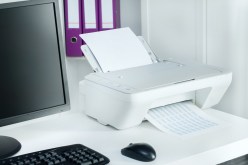Choosing the Right Generator Transfer Switch: A Buyer’s Guide
When it comes to backup power solutions, installing a generator transfer switch is an essential step. A generator transfer switch allows you to safely and efficiently connect your generator to your home’s electrical system during power outages. With a wide range of options available in the market, choosing the right generator transfer switch can be overwhelming. In this article, we will discuss the important factors to consider when selecting a generator transfer switch for your home.
Understanding Generator Transfer Switches
A generator transfer switch is a device that connects your generator to your home’s electrical system. It provides a safe and seamless transition from utility power to backup power during an outage. There are two main types of transfer switches: manual and automatic.
Manual Transfer Switches: As the name suggests, manual transfer switches require manual intervention to switch between utility and backup power. These switches are more affordable and straightforward to install. However, they require you to physically go outside and start the generator during an outage.
Automatic Transfer Switches: Automatic transfer switches are designed to detect power outages automatically and switch from utility power to backup power seamlessly. These switches eliminate the need for manual intervention, providing convenience during emergencies. They are typically pricier than manual switches but offer greater convenience.
Power Requirements
Before purchasing a generator transfer switch, it is crucial to determine your home’s power requirements. The size of the transfer switch you need depends on the number of circuits you want to connect or the total load you wish to support during an outage.
Consider which appliances or circuits are essential for your household’s needs during a power outage, such as lights, refrigerators, heating systems, or medical equipment. Calculate their total wattage requirement and choose a transfer switch that can handle at least this amount of load.
Safety Features
Safety should be a top priority when selecting a generator transfer switch. Look for features such as surge protection, overload protection, and built-in circuit breakers. Surge protection helps safeguard your appliances and electronics from power surges that can occur when the utility power is restored.
Overload protection prevents the transfer switch from being overloaded by automatically disconnecting non-essential circuits if the load exceeds its capacity. Built-in circuit breakers provide an additional layer of protection by interrupting the electrical circuit in case of a fault or overload.
Professional Installation
Installing a generator transfer switch is not a DIY project unless you have extensive knowledge and experience with electrical systems. Improper installation can lead to electrical hazards or damage to your equipment. Hiring a licensed electrician to install your transfer switch ensures that it is done correctly, adhering to local electrical codes and safety standards.
Additionally, professional installation provides peace of mind knowing that the transfer switch has been installed properly and will function reliably during an outage. Electricians can also help you determine the ideal location for the transfer switch and guide you through any necessary permits or inspections.
In conclusion, choosing the right generator transfer switch involves understanding your power requirements, considering safety features, and opting for professional installation. By taking these factors into account, you can ensure a reliable backup power solution that seamlessly transitions during power outages, providing peace of mind for you and your family.
This text was generated using a large language model, and select text has been reviewed and moderated for purposes such as readability.






